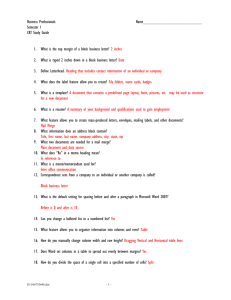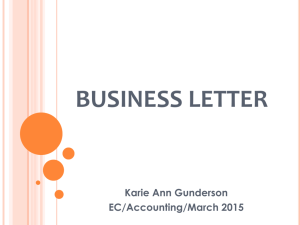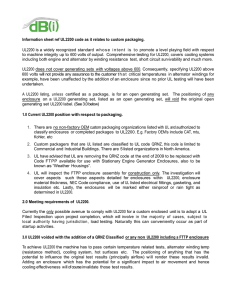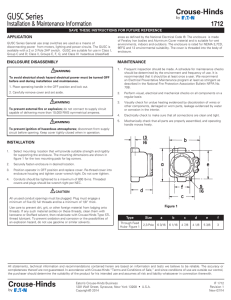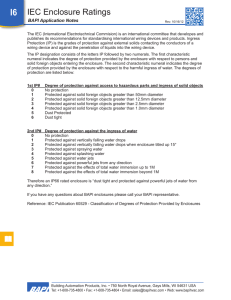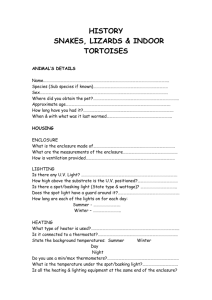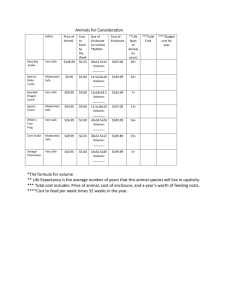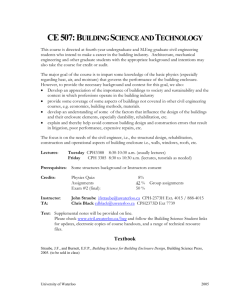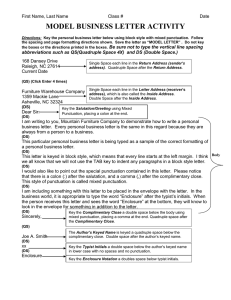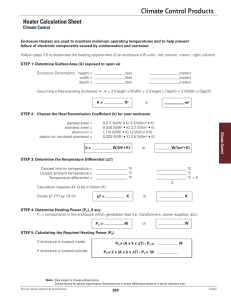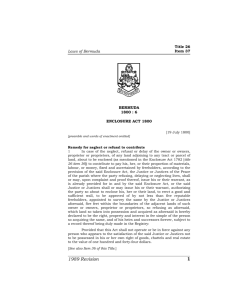Letters and E-mail
advertisement
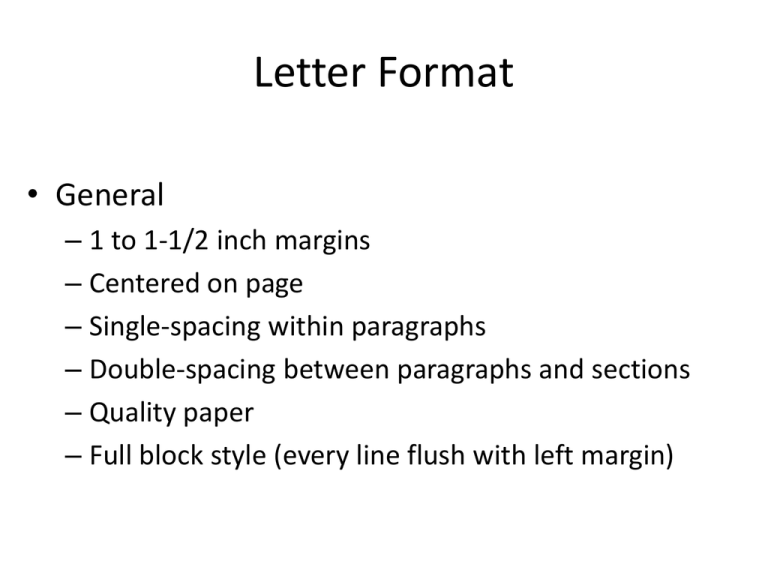
Letter Format • General – 1 to 1-1/2 inch margins – Centered on page – Single-spacing within paragraphs – Double-spacing between paragraphs and sections – Quality paper – Full block style (every line flush with left margin) Writer’s Address or Letterhead • Type address with no name • Official company letterhead Date • Spell out month and use complete numerals for the year (not 8/27/13) • Example – August 27, 2013 Inside Address • Recipient’s name, title, and address • Use appropriate title, department, or company name if necessary • Examples: Director of Human Resources, Human Resources Department, H & H Manufacturing Salutation • Dear _________: • Use title, department, or company name if necessary • Avoid anonymous and sexist greetings (To Whom It May Concern, Dear Sirs, Dear Sir/Madam) Complimentary Close • Use traditional closing followed by a comma • Example: Sincerely, Signature/Name • Triple or quadruple space after the complimentary close and type your name • Place comma between your typed name and title or place title underneath name • Sign your name between the closing and your typed name using black or blue ink Typist’s Initials • Your initials/typist initials • GB/pw Enclosure Line • If you are sending another item with the letter, include Enclosure, Enclosures, Enclosures (3), or Enclosure: Receipt • NOTE: Also mention enclosure in the body of the letter Copy Notation • Use when a copy or copies of letter are being distributed to another reader or readers • cc: Name(s), title(s) (appears on all copies of letter) • bcc: Name(s), title(s) (appears only on blind copy) Claim Letter Addressed to Customer Service Dept. Enclosure cc: John Peters, CEO Enclosure cc: John Peters, CEO bcc: Felicia Jones, Attorney at Law Abbot and Jones Law Firm Writing and Organizing Letters Content • Brief introductory paragraph that establishes context and states the letter’s purpose concisely. • Middle paragraph(s) that convey the content of the message in a logical order. • Brief concluding paragraph that politely requests action, thanks the reader, or provides additional relevant information. • Two approaches Organization – Traditional, Direct Approach – Indirect Approach Direct Approach • Anticipates no resistance to message • Communicates good news, straightforward information, requests likely to be granted • Begins with an up-front statement of purpose Indirect Approach • Anticipates resistance to message • Communicates “bad news” of some type • Begins with a buffer—material designed to win trust and goodwill; postpones the “bad news” or negative message • • • • • • • Agreement Appreciation Cooperation Fairness Good News Praise Understanding Buffers Using E-mail Effectively E-mail Use • How many use it regularly? • Why or when do you use it? Statistics: Radicati Group • 825 million business e-mail accounts worldwide as of 2012 • Expected to grow to 1.15 billion (35% by 2016) • As of 2012, 89 million business e-mails sent per day • About 105 per day, per account • • • • • Advantages of E-mail Quick sending and replying Inexpensive Embedded internet addresses Attached files Easy distribution of copies • • • • • Potential Disadvantages Overuse Sloppy Habits Difficulty of Retrieval Security Concerns Less “permanent” paper trail Limitations of E-mail • E-mail in the workplace is generally not used for extremely important or formal messages or for personal use. • Instead, use e-mail for routine communication E-mail Format • Modification of traditional memo: From, Date, To, Subject, CC • Organize each e-mail the same way you would a letter. • Use paragraph breaks if needed • Include salutation if desirable and signature block Guidelines for E-mail • Avoid using fancy formatting (italics, boldface, tab spacing, and so forth) • Check your message for spelling and grammar before you send it. • DON’T WRITE IN ALL CAPITAL LETTERS. DOING SO IS OFTEN VIEWED AS “SHOUTING” AND ALL CAPS IS HARD TO READ. • Follow your company’s guidelines for using email. • Avoid “spamming” and “flaming.” • Be brief. • Follow-up.

